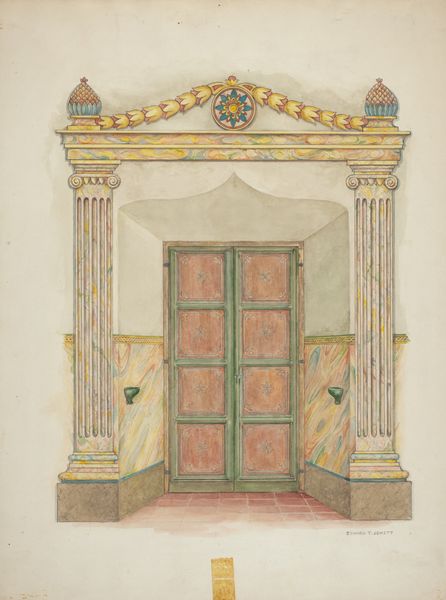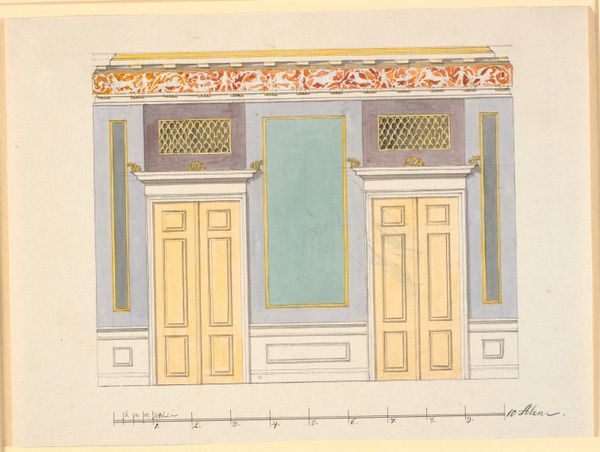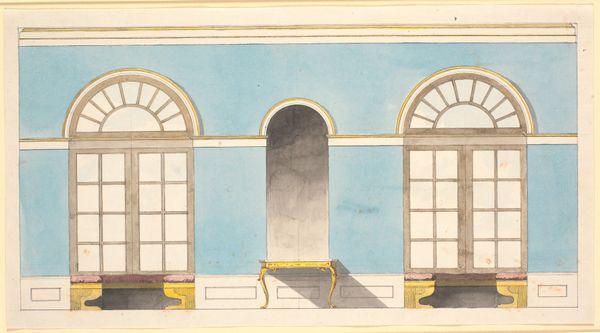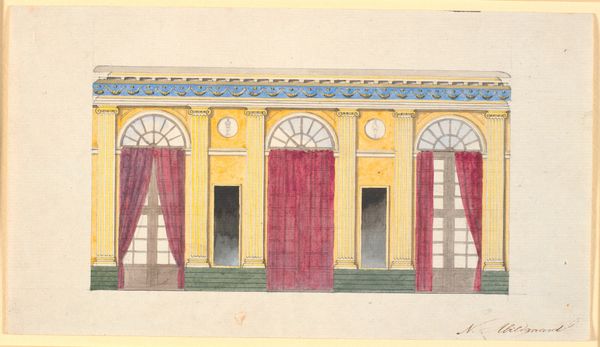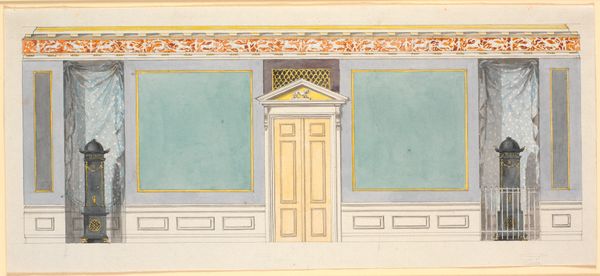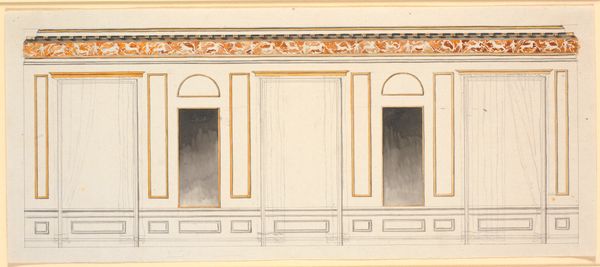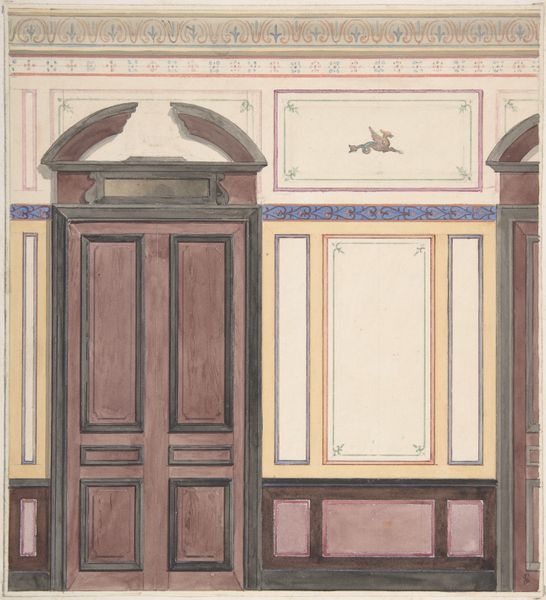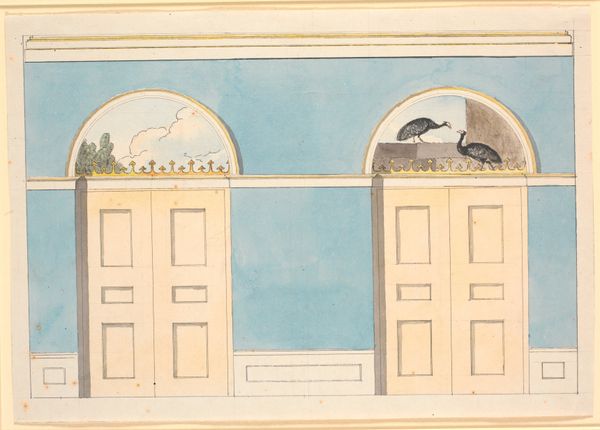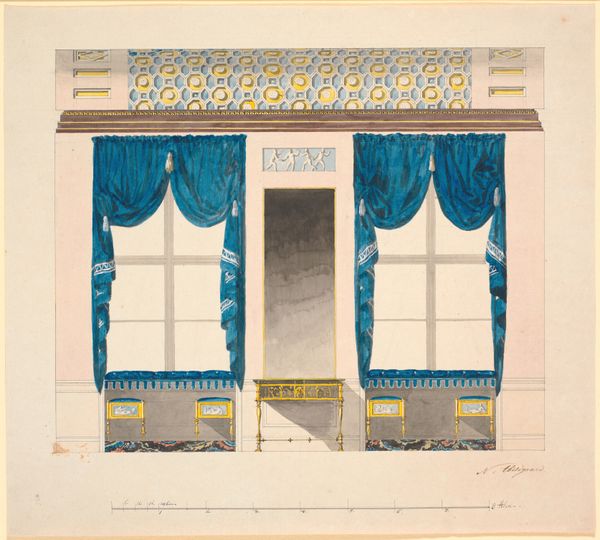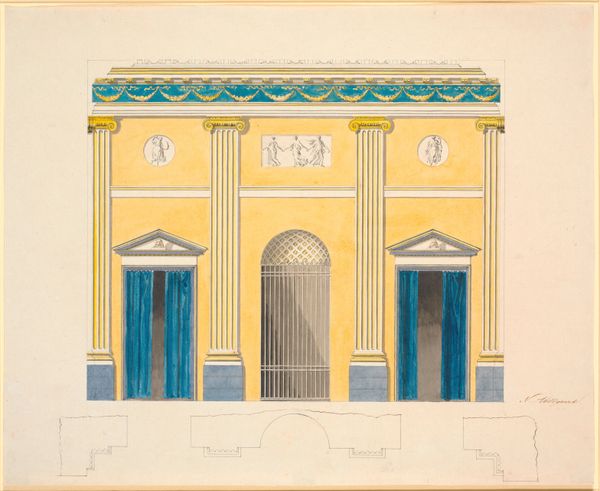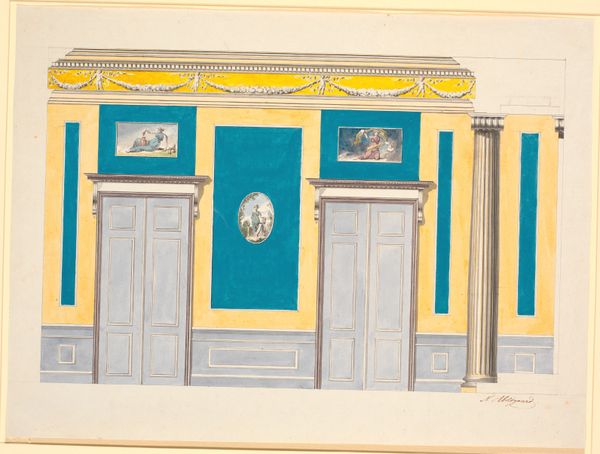
Udkast til dekoration af vinduesvæggen i appartementssalen 1743 - 1809
0:00
0:00
drawing, watercolor, architecture
#
drawing
#
neoclacissism
#
historic architecture
#
traditional architecture
#
watercolor
#
line
#
history-painting
#
watercolor
#
architecture
Dimensions: 183 mm (height) x 412 mm (width) (bladmaal)
Curator: I am immediately struck by the symmetry and cool color palette. The drapes especially seem to emphasize the geometric harmony, despite their flowing forms. Editor: What we’re looking at here is a drawing entitled "Udkast til dekoration af vinduesvæggen i appartementssalen," which translates to "Draft for the decoration of the window wall in the apartment hall." It's attributed to Nicolai Abildgaard, dating somewhere between 1743 and 1809. It’s currently held at the SMK, the National Gallery of Denmark. Curator: That title tells us much. It places the image in the realm of design, of functional aspiration. It's Neoclassical style suggests a deliberate reaching back to antiquity for legitimacy. Editor: Precisely. Abildgaard was a leading figure in the Danish Neoclassical movement, and heavily involved in royal artistic commissions. His time in Rome exposed him to the artistic ideologies of the era which influenced a rejection of the ornate styles in favor of rational simplicity and historical narratives. Curator: That classical influence is evident not just in the friezes above the windows, with the depictions of figures recalling ancient Greek vases, but in the overall order and balance of the composition. Editor: This aesthetic shift mirrored broader social and political changes, a move away from the extravagance of the aristocracy towards more "enlightened" ideals inspired by Republican Rome and Greece. Art academies increasingly promoted "decorum" in subject matter, focusing on grand, historical themes capable of teaching virtue and moral lessons to a broader audience. Curator: It is interesting how this piece seems almost a stage set: these windows and doorways are dark and suggest the unknowable, contrasted by the stark architectural details, like symbolic guardians to the "other". The drapes frame the "stage" but only suggest and conceal rather than reveal. It seems both beautiful and foreboding. Editor: Yes, there's a powerful sense of restraint, of controlled elegance, wouldn't you agree? And it serves as a testament to the political climate in that time which was undergoing considerable change reflected even within artistic projects like this draft for a drawing room. Curator: Looking at it from a structuralist perspective, one might even see these design elements as functioning like language, each line, each color choice conveying coded meaning about power, taste, and cultural aspiration. Editor: So, it is perhaps more than a drawing room draft: it represents a specific social era as it turned toward Neoclassical artistic ideals. Curator: Indeed, a small work that offers a window onto a grand, transforming world.
Comments
No comments
Be the first to comment and join the conversation on the ultimate creative platform.
